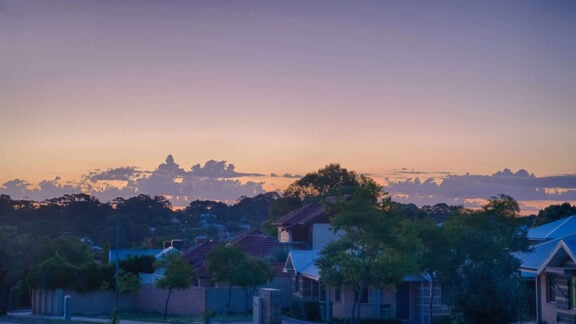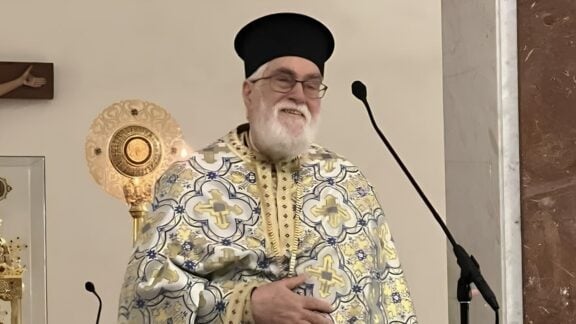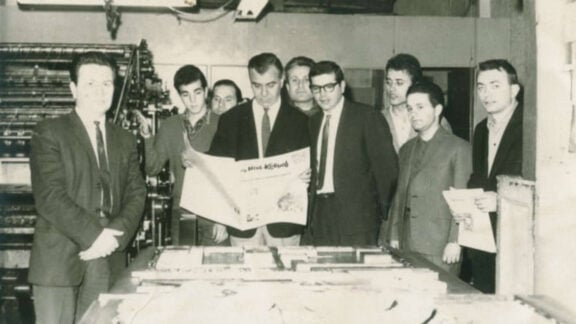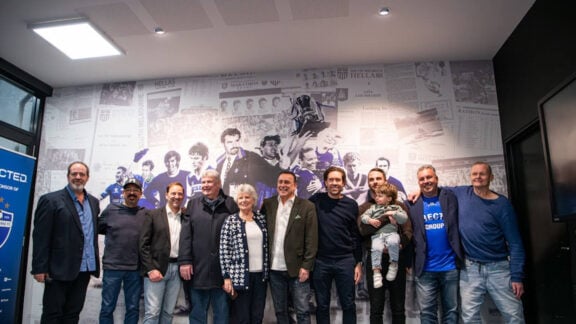Who doesn’t remember “Megalo megalo megalo … Buy from Franco Cozzo! Today, tomorrow, always! In Brunsawick, Norta Melbourne and Footiscray”?
Renowned Melbourne furniture icon Franco Cozzo, known for his exuberant ads and vibrant baroque furniture, passed away at 88 as his family announced on Facebook yesterday.
From his iconic showrooms in Footscray and Brunswick to his impact on the city’s immigrant identity, Cozzo’s legacy extends beyond furniture, leaving an indelible mark on Melbourne’s history.
In the hearts of Melburnians, those words will forever echo, marking the distinctive presence of Franco Cozzo, the exuberant Italian-Australian furniture maestro.
Cozzo’s captivating hand-waving DIY television ads, showcasing his signature colorful baroque furniture, became ubiquitous in the 1980s and ’90s, transforming him into a Melbourne icon.
Beyond the allure of his furniture, Cozzo’s advertisements, delivered in a fusion of English, Italian, and Greek, became emblematic of Melbourne’s burgeoning multicultural identity and the immigrant community in the late 20th century.
Born on October 2, 1935, in Sicily, Cozzo immigrated to Australia at the age of 21 in the 1950s. He later gained prominence for promoting his furniture in showrooms located in Footscray, Brunswick, and briefly in North Melbourne. Cozzo’s enduring celebrity status was immortalized in a feature-length documentary in 2021, and a mural of his image now adorns his former showroom in Footscray, a place he affectionately pronounced as “Footiscray.”
For five decades, Cozzo owned and operated his Footscray showroom on Hopkins Street until its sale in 2018 for $7 million. Another longstanding store on Sydney Road in Brunswick has also closed its doors. However, the impact of Cozzo’s immigrant identity endures, as Les Twentyman, a veteran youth worker in Melbourne’s inner west, attests. Twentyman recalls Cozzo employing Melburnians facing homelessness in his stores, fostering a sense of belonging to an icon of the western suburbs.
Cozzo’s influence extends beyond the realm of furniture. In 1968, he produced Australia’s first Italian language TV program, “Carosello,” showcasing his versatility. By the ’80s, his direct approach to self-promotion in ads further solidified his cult figure status in Melbourne.
The documentary “Palazzo di Cozzo” chronicles Cozzo’s journey from Sicily, where he worked with his father breaking horses, to the promise of a better life in Australia. Serving as both a portrait of the man and a social history of migration in Melbourne, the film underscores Cozzo’s integral role in the city’s rich tapestry. At the time it was being filmed Neos Kosmos had put out a call for Greeks to participate in it.
Director Madeleine Martiniello wanted to get in touch with Greeks who want to share their immigration history and their relationship with furniture to feature in the documentary given that hundreds of Greeks had bought furniture from the ‘Foot-a-scraaay’ store and knew Mr Cozzo personally.
Earlier in the year, the Maribyrnong City Council approved plans to transform Cozzo’s former Footscray store into a multi-level bar and music venue.
The owners are committed to preserving the iconic signage and mural while creating a space dedicated to the furniture king, showcasing wares reminiscent of his storied showrooms.
Social media flooded with tributes to Cozzo, describing him as “the ultimate immigrant success story.” Victorian minister Natalie Suleyman, representing the seat of St Albans, paid homage, declaring, “Vale Franco Cozzo, a legend of the west.”
Franco Cozzo is survived by his wife Assunta and 10 children.









